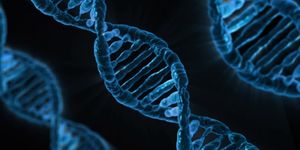Fat Cells in Different Parts of the Body are not Alike
Not all fat is the same. Researchers are learning more about how fat stored in different parts of the body can have different impacts on health. They compared fat cells taken from under the skin with fat cells from the abdomen, since abdominal fat is known to be associated with health problems and skin fat is not. They found that chemical tags added to the genome that can impact gene expression - the epigenome of these types of fat cells is different. The work has been published in Scientific Reports.
"Our findings tell us that a cells' epigenome - the secondary code that controls how genes are read - can give us significant insight into how fat cells develop," explained the co-senior study author Professor Susan Clark, Genomics Research Director at the Garvan Institute. "The study gives us a completely new look at the underlying factors that contribute to the development of cells that can present significant health risks."
Abdominal fat, also known as visceral adipose tissue, has been linked to a variety of disorders including metabolic disease, insulin resistance, increased mortality, and several kinds of cancer. This fat releases hormones and may play a major role in disease development. Subcutaneous fat is located underneath the skin, functioning primarily to store energy, and is generally benign; it has not been connected to disease.
"It has been unclear why fat cells, which appear so similar, are associated with such different health outcomes," said study author Professor Katherine Samaras, Head of the Clinical Obesity, Nutrition and Adipose Biology lab at Garvan and endocrinologist at St. Vincent's Hospital Sydney. "Now we start to understand that the different fat cells are wired differently right from the start."
In this work, three participants donated samples of visceral and subcutaneous fat. The researchers were able to look at gene expression in the fat, as well as the epigenome. The scientists generated a genomic map from their data, and identified various genetic differences. They found that the differences start early on in the development of a cell; many of the most striking changes were in the methylation (a common epigenetic tag) of transcription factors, which control the expression of other genes, and developmental genes. The researchers hypothesized that precursors to the fat cells contain these differences and pass them down. Fat cells may, therefore, be hard-wired to be harmful or benign.
"When compared with other cell types in the body, visceral and subcutaneous fat cells are very similar to each other in their function," added lead study author Dr. Stephen Bradford. "Our analysis revealed epigenetic differences that may control different genes being turned on in subcutaneous and visceral fat cells that could contribute to their different properties and health effects."
"This comprehensive study demonstrated that the epigenome can provide an unprecedented view into the differences of cells that seem apparently very similar," said the co-senior author Dr. Peter Molloy of the CSIRO. "We believe that such analyses will provide us with further crucial insight not only into the development of fat, but also for other cell types in future."
Sources: AAAS/Eurekalert! Via Garvan Institute of Medicine, Scientific Reports









